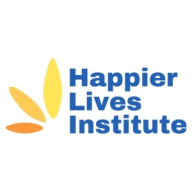
Happier Lives Institute
@ Happier Lives Institute
Bio
The Happier Lives Institute connects donors, researchers, and policymakers with the most cost-effective opportunities to increase global wellbeing.
Using the latest subjective wellbeing data, we identify the problems that matter most to people and find evidence-based ways to solve them.

Thank you for your comments, Gregory. We’re aware you have strong views on the subject and we appreciate your conscientious contributions. We discussed your previous comments internally but largely concluded revisions weren’t necessary as we (a) had already considered them in the report and appendix, (b) will return to them in later versions and didn’t expect they would materially affect the results, or (c) simply don’t agree with these views. To unpack:
This is a working report, and we’ll be reflecting on how to incorporate the above, similarly psychotherapy-sceptical perspectives, and other views in the process of preparing it for academic review. In the interests of transparency, we don’t plan to engage beyond our comments above so as to preserve team resources.
We find an initial effect is 0.70 SDs, reduced to 0.46 SDs after publication bias adjustments. Cuijpers et al. 2023 find an effect of psychotherapy of 0.49 SDs for studies with low risk of bias (RoB) in low, middle, and high income countries (comparisons = 218), which reduces to between 0.27 and 0.57 after publication adjustment. Tong et al. 2023 find an effect of 0.69 SDs for studies with low RoB in non-western countries (primarily low and middle income; comparisons = 36), which adjust to between 0.42 and 0.60 after publication correction. Hence, our initial and adjusted numbers are similar.